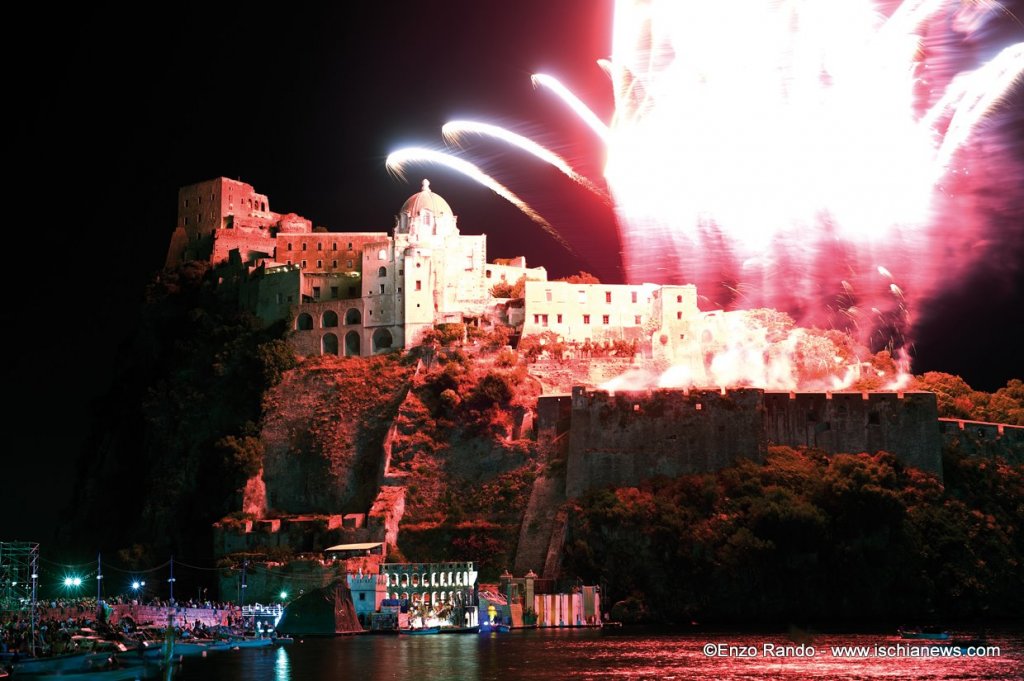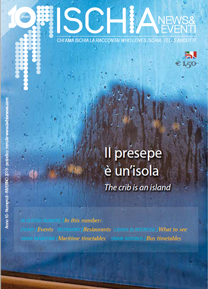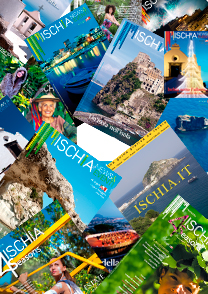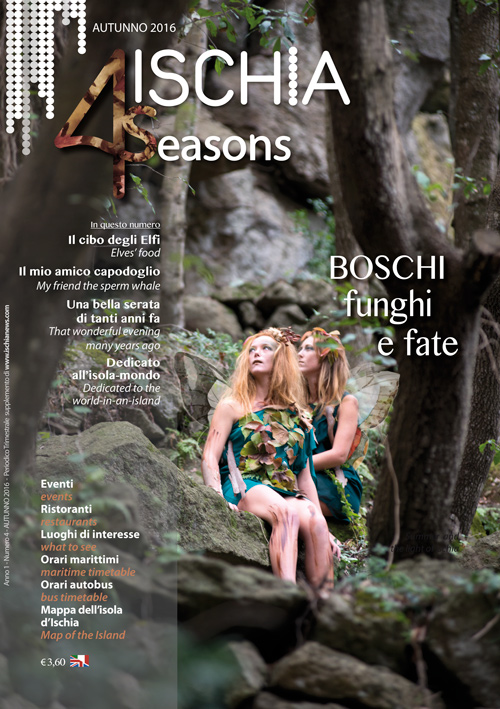The island of silence, diary of a trip to Sant’ Anna
 Ischia, with its 8.14 km square, whose name derives from “Insula Maior” then changed into “Iscla”, is the capital city of the island. It is divided into two parts, “Ischia Porto” that it is one of the main settlements and “Ischia Ponte” called in this way because of the stone bridge - in wood, until the ‘700 - which connects the village with the Aragonese Castle. With its 19,000 inhabitants, it has a population that has made of solidarity and the spirit of sharing the strong pillars on which it bases the history and tradition.
Ischia, with its 8.14 km square, whose name derives from “Insula Maior” then changed into “Iscla”, is the capital city of the island. It is divided into two parts, “Ischia Porto” that it is one of the main settlements and “Ischia Ponte” called in this way because of the stone bridge - in wood, until the ‘700 - which connects the village with the Aragonese Castle. With its 19,000 inhabitants, it has a population that has made of solidarity and the spirit of sharing the strong pillars on which it bases the history and tradition.
Ischia Ponte and its bay that draws natural architecture is revealed, it is said, and becomes an ideal place to go in the memory sublimated in the descriptions of those who shared and still participates in the spirit and essence.
It is a living place to live, where while passing time does not grow old. The inner universe of the observer, not just looks out the window of the fantastic plan in this paradox. It remains a prisoner of the show that repeats daily. It is the natural end of the day, while the last of the sun bounce off the silver surface of the sea and the salt is mixed with the sea breeze by attaching to the skin, the baggage is evoked on traditional land, replacing the secular dimension with the mystical and immortal one; and transforms the meaning of the beholder.
On the bridge, while the Castle imposes itself with its mass, the alchemical operation becomes tangible and you cannot go back. You are warned. It is in this short circuit, the connection between the human and the divine, time and suspension that the tape imagination starts thanks to the magnetic force of reminiscence without the knowledge of the spectator. He is surprised, sees slide in mind the tales of days indelible of children with their families. Between spray and winds on the paddle boats that draw new forms in the sea, the water slides where you want, and continuing through the marina to the beach of Corteglia, “Travi”, the old cemetery were heading to the rocks of Sant’Anna”.
Andrea Di Massa - in The Feast of the boats of Sant' Anna, representations on the water in the bay of Ischia Ponte, Imagaenaria Editions, Ischia 2004 - tells about the appointment of a not ordinary day. On July 26 of each year the Fascist era - at that time aimed to revalue local traditions, and the recovery of the 'Ndrezzata fits fully - is dedicated to the celebration of the Feast of St. Anna as we know it today.
The “celebration on the sea”, comes from the front rites rooted in tradition that “they gave as deadlines of natural cycles”. In addition, it is on this swing memory that matches the Catholic celebration of St. Anne, protector of pregnant women. Although over the years the definition has been amended several times, from the Maritime Festival in Festival of decorated boats, from sea festival at parades of allegorical boats passing by Party at sea the rocks of Sant’ Anna, the original content of the anniversary “consisted in set fire to several bonfires that were lit at dusk”. With wood accumulated in the year, the power began from Mount Epomeo and then expand to other locations “on Soronzano, Cilento, in Campagnano and finally the old cemetery”. The fires were the high point of the festival and revealed the desire for renewal and purification.
The competitions of swimming and boating were framed by the passion and myth. Before 1932, official year of the festival in honor of the Saint protector of pregnant women. The ritual followed archaic forms in the celebrations: leisure and refreshing break and the food consumed by the families of fishermen at sea on boats a summer evening expressed the sentiment communion before he once landed relatives on the mainland, they left for long periods of fishing.
“To make unforgettable a July 26 many years ago, was the husband of my sister Memena, Luigino, angler. Just before the going down of the sun began to prepare his boat like a strange ritual that I had never seen. Soon we were all gathered on the bridge: me at the age of six, my mother, my sister and other relatives. We got into the boat. I realized that we were not alone. Many people, whole families, had embarked and now all the boats were heading fast towards the “current”, to go beyond the Aragonese Bridge. Arrived in the mirror of the sea on the other side of the castle, always calm in the summer time, the boats all along pointed towards the rocks of Sant’Anna”.
They were all people in the area of Ischia Ponte and the Mandra, rowed the waves that pulsing time in one direction: to the church dedicated to Santa to stop there in silence. As if the whole country had made an appointment under the hill of Soronzano waiting for the boats together in the evening. In addition, in the calm announcing the night the glow of the campfire near the church changed the background and brought to life the soul serene renewed laughter accompanied by music, by the voices, by songs and a few gestures with which you took out dinner from baskets placed under the belly of the boat. The menu was the same for everyone: rabbit cacciatore, eggplant parmigiana and wine.
When the bonfire near the church was beginning to run out, at midnight, all came back home. The anglers, those not, would return the next morning with the precious cargo of combers and pint''e RRE following the route of the new day.

























